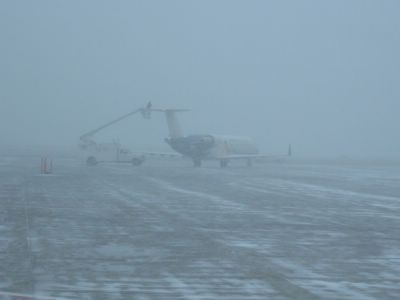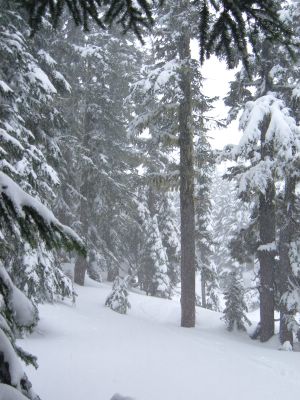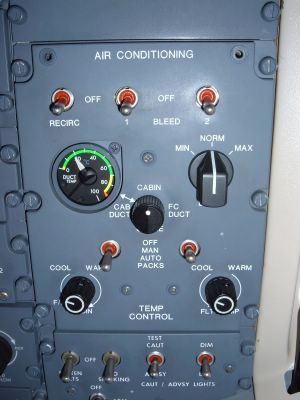One of my early memories is from when I was about six years old, playing "war" with the older neighbor kid. He was the Russians and I was the Americans; we had all of our toy cars (tanks!), boats (ships!) and planes (F-14s!) in order on my living room floor, facing each other. We engaged in battles, their outcomes determined by the rapidly escalating volume of our sound effects. Finally, the neighbor kid took a plane, flew it over my formations, and with a deafening "BOOM!," scattered them all over the room.
"Ha! I dropped a nuclear bomb on you!"
I didn't know what he was talking about. "What's a nuclear bomb? You wrecked all my tanks!"
"A nuclear bomb can wipe out a whole
country. The russians have lots of them!"
"Well," I said slyly while pulling an airplane from around the corner, "you didn't get this airplane, and it's gonna new-clear
you! BOOM!"
That was probably my first realization of the existence of nuclear weaponry, or that the Soviets were our enemy in the 40-year old Cold War. As I got older, I became rather interested in foreign affairs and followed events closely. I'm thankful that I'm just old enough to have seen the liberation of Eastern Europe throughout 1989, and the fall of the Soviet Union in 1991. I distinctly remember watching the Berlin Wall come down on our little 12-inch black-and-white TV.
Right now I'm reading "Fifty Year War: Conflict and Strategy in the Cold War" by Norman Friedman. It's a comprehensive look at what he describes as World War III, fought at a much slower pace than usual "hot" wars. It's hard to find books on this subject that aren't slanted left or right, because especially in the last 20 years of the war, the left and right were often viruently opposed on foreign policy. Friedman, however, takes a pretty balanced approach that recognizes the victories and missteps of all parties involved. Here are some of the high points:
-- Truman wasn't negligent in "losing China," as Eisenhower claimed during the 1952 campaign, but the 1947 cease-fire imposed upon Mao and Chiang Kai-shek was ill-advised, since it allowed the communists critical time to regroup from a devastating defeat. Still, once war broke out later that year, Truman was right to not send massive aid to Kai-shek, who was unreliable and corrupt, and lacked much popular support.
-- Eisenhower was somewhat disengenuous in his 1952 campaign declaration that he had a plan to win the Korean War (echoed in Nixon's 1968 "secret plan" to end the Vietnam War). However, during Eisenhower's eight years in office, he proved to be a brilliant strategist who projected American strength during a crucial time. His "nuclear brinksmanship", decried by some as reckless, worked well in keeping Stalin and then Khrushchev at bay.
-- The "bomber gap" and subsequent "missile gap" of the late 50's never existed: American firepower at the time was far superior to the Soviets. The intelligence community miscalculated the number of missiles the Soviets had because they assumed prototype-to-production time was the same as for the West; in fact, because of Stalin's purges of the Soviet aircraft industry, their production capability was limited, and getting a prototype into production took considerable time.
-- By 1960, the CIA realized their error, and decided any "missile gap" was in favor of the Americans. John F. Kennedy was provided with this information, yet he continued to exploit the public perception of a missile gap in hammering away at the Eisenhower administration (and by extension, his opponent, Vice President Richard Nixon). Kennedy narrowly won the election; Eisenhower was disgusted by his tactics.
-- Kennedy was not an instinctive politician, and he relied heavily on his advisors. Unfortunately, much of the advice he got was poor, in particular that from Robert McNamara, his SecDef. In particular, their policy of escalating wars incrimentally to "send messages" to the Soviets was to have disasterous implications for Vietnam.
--Khruschev was a moderate compared to Stalin, and was mostly uninterested in directly waging war with the west. Rather, he was mainly interested in currying favor with client states, so they could wage war by proxy at his bidding, as Stalin had done with the Koreans. Placing missiles on Cuba was an attempt to bind Castro to him; when the missiles were withdraw, Castro was furious. Only after the Soviet's 1968 invasion of Czecheslovokia did Castro reconcile with the Soviets, realizing that it was dangerous to stray from the Soviet line.
-- Khruschev's attempts to deal with some of the inefficiencies of the Soviet system are what doomed him; it was too inconvenient for too many people. Brezhnev reversed Khruschev's reforms and gave Soviet industrialists
laissez faire in production of military goods, in exchange for their loyalty. Thus, the huge Soviet military output in the late 1960's and 1970's and corresponding shortage of consumer goods. This weakened their economy considerably, which Reagan would exploit in the 1980's.
-- The war in Vietnam was very winnable, and through most of it the US and ARVN (South Vietnamese)
were winning. The Viet Cong was virtually decimated and the North Vietnamese regulars were weak and demoralized by 1971, but by then public pressure to end the war precluded any escalation which would've done so. In particular, failure to take aggressive action against the Ho Chi Mihn trail in Laos for political reasons had immense consequences. The first mistake Johnson made, however, was deciding not to gain public and congressional support before escalating the war.
-- The western anti-war movement was not Soviet originated, but the Soviets found it extremely useful and eventually funded much of it and directed some activities. Ironically, the Soviets had very little control over the war; it was primarilly the Chinese, by then opposed to the Soviets, who were waging war by proxy via the North Vietnamese. The anti-war movement's public influence was one of the few bright spots for the North Vietnamese; the media portrayal of the Tet Offensive as a disaster for US forces (in reality, the Viet Cong & North Vietnamese got royally slaughtered) was one of the few things that convinced North Vietnam to try it again during later negotiations.
Anyways, the book has considerably fleshed out my world history knowledge for 1940-1975; I'm looking forward to reading what Friedman has to say about Reagan's military buildup and economic attacks on the Soviet Union.
(By the way, the title of this thread was a tattoo on the forearm of General Curtiss LeMay, for years the head of SAC (Strategic Air Command). Peace is our Profession, indeed!)





















